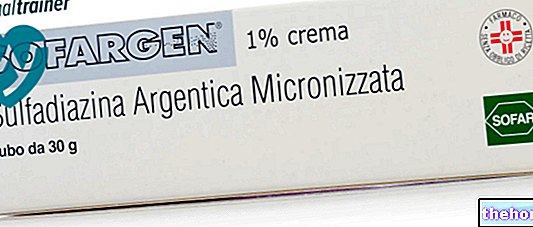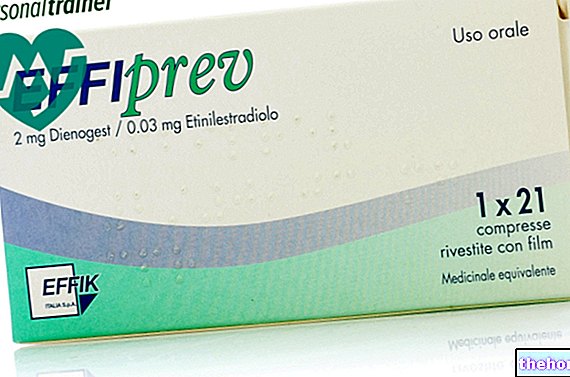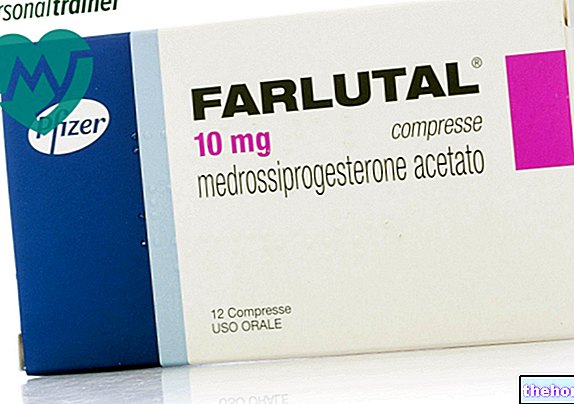Active ingredients: Diclofenac
Dicloreum Actigel 1% Gel
Why is Dicloreum actigel used? What is it for?
Dicloreum Actigel is a gel to be applied to the skin containing the active ingredient diclofenac hydroxyethylpyrrolidine, which belongs to a category of drugs called non-steroidal anti-inflammatory drugs (NSAIDs).
Dicloreum Actigel is indicated for the local treatment of pain and inflammation of joints, muscles, tendons and ligaments due to rheumatic diseases or trauma.
Contraindications When Dicloreum actigel should not be used
Do not use Dicloreum Actigel
- if you are allergic to diclofenac or any of the other ingredients of this medicine.
- in case of previous attacks of asthma, skin rash (urticaria) or cold (acute rhinitis) which occurred after taking drugs containing acetylsalicylic acid (eg aspirin), other non-steroidal anti-inflammatory drugs and isopropanol.
- in the third trimester of pregnancy as it can cause damage to the heart, lungs and kidneys of the fetus (see section "Pregnancy and breastfeeding").
- in children and adolescents under 14 years of age as data on the safety and efficacy of the medicine in this age group are not known.
Precautions for use What you need to know before taking Dicloreum actigel
The use, especially if prolonged and on large surfaces of the skin, of anti-inflammatories for local use could give rise to undesirable effects on the organism and allergies. In this case it is necessary to stop the treatment and consult your doctor.
Uses Dicloreum Actigel:
- only on intact, non-diseased skin that has no wounds or open lesions.
- only with bandages that let air through (loosely tight bandages)
Pay attention that the gel does not come into contact with the eyes and mucous membranes (eg mouth or vagina): if this happens, wash immediately with running water and contact your doctor. Do not ingest the gel.
Use Dicloreum Actigel with particular caution:
- if you suffer from asthma, chronic obstructive diseases of the bronchi, allergic cold or inflammation of the nasal mucosa (nasal polyps) because it can more easily manifest, compared to other patients, asthma attacks, local inflammation of the skin or mucous membranes (edema of Quincke) and skin rash (hives).
Interactions Which drugs or foods can modify the effect of Dicloreum actigel
Tell your doctor or pharmacist if you are taking, have recently taken or might take any other medicines.
Since this medicine acts locally on the skin, the absorption of the active ingredient by the body is very low and it is difficult to interact with other drugs or with food.
In case of use of the medicine in high doses and for long periods of time it is advisable to consult your doctor or pharmacist.
In elderly patients and / or patients suffering from gastric level, the simultaneous intake of anti-inflammatory drugs is not recommended.
Warnings It is important to know that:
Pregnancy and breastfeeding
If you are pregnant or breast-feeding, think you may be pregnant or are planning to have a baby, ask your doctor or pharmacist for advice before using this medicine.
Pregnancy
During the first or second trimester of pregnancy, diclofenac should not be administered except in strictly necessary cases and only under medical supervision. In any case, if you are planning a pregnancy or if you are in the first or second trimester of pregnancy, remember to keep the dose as low as possible and the duration of treatment as short as possible to avoid the risk of miscarriage and birth defects. Do not use the medicine during the third trimester of pregnancy (see section "Do not use Dicloreum Actigel) as non-steroidal anti-inflammatory drugs can cause:
- damage to the heart, lungs and kidneys of the fetus
- a prolongation of bleeding time in the mother and newborn
- an impediment to uterine contractions in the mother with delayed or prolonged delivery.
Feeding time
As with other non-steroidal anti-inflammatory drugs, the diclofenac contained in this medicine is released into breast milk. At the recommended doses of Dicloreum Actigel no effects on the infant are anticipated, however, due to the lack of adequate studies, breastfeeding women can only use this medicine under the advice of a doctor or pharmacist. In this case, remember not to apply the medicine to the breasts, or to large areas of skin and for long periods of time (see section "Warnings and precautions").
Driving and using machines
Dicloreum Actigel does not affect the ability to drive or use machines.
Dose, Method and Time of Administration How to use Dicloreum actigel: Posology
Always use this medicine exactly as described in this leaflet or as directed by your doctor or pharmacist. If in doubt, consult your doctor or pharmacist.
Use in adults
Apply Dicloreum Actigel 3 or 4 times a day on the area to be treated, massaging lightly.
The dose to be applied depends on the size of the part to be treated. For example, 2-4 g of Dicloreum Actigel (quantity of variable size between a cherry and a walnut) are sufficient to treat an "area of 400-800 cm2.
After application, wash your hands, otherwise they will also be treated with the gel.
Use only for short periods of treatment.
Use in adolescents aged 14 to 18 years
Apply Dicloreum Actigel 3 or 4 times a day on the area to be treated, massaging lightly.
The dose to be applied depends on the size of the part to be treated. For example, 2-4 g of Dicloreum Actigel (quantity of variable size between a cherry and a walnut) are sufficient to treat an area of 400-800 cm2. After application, wash your hands, otherwise they will also be treated with the gel.
If the medicine is needed for more than 7 days to relieve pain or if symptoms worsen, consult a doctor.
Use in children and adolescents under the age of 14
Dicloreum Actigel should not be used in children and adolescents under 14 years of age because there are insufficient data to evaluate the safety and efficacy of the medicine in this age group.
Use in the Elderly
The usual adult dosage can be used.
Overdose What to do if you have taken too much Dicloreum actigel
Notify your doctor immediately or contact the nearest hospital if you use too much or accidentally swallow Dicloreum Actigel by mouth.
Since this medicine acts locally on the skin, the absorption of the active ingredient by the body is very low and cases of overdose are unlikely to occur. However, using excessive doses of the medicine or accidentally taking it by mouth can cause unwanted effects.
Side Effects What are the side effects of Dicloreum actigel
Like all medicines, Dicloreum Actigel can cause side effects, although not everybody gets them.
Common side effects (may affect up to 1 in 10 people):
- rash on the skin (rash)
- intense redness of the skin (erythema) and blistering (eczema)
- inflammatory skin reactions (dermatitis, including contact dermatitis)
- itch
Rare side effects (may affect up to 1 in 1,000 people):
- skin inflammation with blisters (bullous dermatitis)
Very rare side effects (may affect up to 1 in 10,000 people):
- allergic reactions, including skin rash (hives)
- rapid swelling of the skin (angioneurotic edema)
- skin rash (rash) with pustules
- shortness or difficulty in breathing (asthma)
- skin reactions to sunlight (photosensitivity)
Dicloreum Actigel in combination with other medicines containing diclofenac may cause the following side effects:
- hypersensitivity to light
- intense redness of the skin (erythema) and blistering (eczema)
- severely evolving skin reactions (Stevens-Johnson syndrome, Lyell syndrome)
Reporting of side effects
If you get any side effects, talk to your doctor or pharmacist. This includes any possible side effects not listed in this leaflet. You can also report side effects directly via the national reporting system at www.agenziafarmaco.it/it/responsabili. By reporting side effects you can help provide more information on the safety of this medicine.
Expiry and Retention
Keep this medicine out of the sight and reach of children.
Do not use this medicine after the expiry date which is stated on the package. The expiry date refers to the last day of that month.
Store this medicine in the original package below 30 ° C.
After the first opening of the tube, the gel can be used for a period of time not exceeding 12 months.
Do not use this medicine if the pack has been opened or damaged. Do not throw any medicines via wastewater or household waste. Ask your pharmacist how to throw away medicines you no longer use. This will help protect the environment.
Other Information
What Dicloreum Actigel contains
- The active ingredient is diclofenac hydroxyethylpyrrolidine. 100 g of gel contain 1.32 g of diclofenac hydroxyethylpyrrolidine (equal to 1.0 g of diclofenac sodium).
- The other ingredients of the medicine are: macrogols, macrogol stearate, cetyl stearyl-2-ethylhexanoate, carbomers, trolamine, isopropyl alcohol, fragrance, purified water.
What Dicloreum Actigel looks like and contents of the pack
Dicloreum Actigel comes in the form of a gel in a 50 g or 100 g aluminum tube.
Not all presentations may be marketed.
Source Package Leaflet: AIFA (Italian Medicines Agency). Content published in January 2016. The information present may not be up-to-date.
To have access to the most up-to-date version, it is advisable to access the AIFA (Italian Medicines Agency) website. Disclaimer and useful information.
01.0 NAME OF THE MEDICINAL PRODUCT
DICLOREUM ACTIGEL 1% GEL
02.0 QUALITATIVE AND QUANTITATIVE COMPOSITION
100 g of gel contain:
Active principle: diclofenac hydroxyethylpyrrolidine 1.32 g - equal to 1.0 g of diclofenac sodium. For the full list of excipients, see section 6.1.
03.0 PHARMACEUTICAL FORM
Gel
04.0 CLINICAL INFORMATION
04.1 Therapeutic indications
For the local treatment of painful and inflammatory conditions of a rheumatic or traumatic nature of the joints, muscles, tendons and ligaments.
04.2 Posology and method of administration
Adults over the age of 18 :
Apply DICLOREUM ACTIGEL 3 or 4 times a day on the area to be treated, rubbing lightly. The amount to be applied depends on the size of the affected part. For example, 2-4 g of DICLOREUM ACTIGEL (quantity of variable size between a cherry and a walnut) are sufficient to treat an area of 400-800 cm2. After application, wash your hands, otherwise they will also be treated with the gel.
Warning: use only for short periods of treatment.
Teenagers aged 14 to 18 :
Apply DICLOREUM ACTIGEL 3 or 4 times a day on the area to be treated, rubbing lightly. The amount to be applied depends on the size of the affected part. For example, 2-4 g of DICLOREUM ACTIGEL (quantity of variable size between a cherry and a walnut) are sufficient to treat an area of 400-800 cm2. After application, wash your hands, otherwise they will also be treated with the gel.
If this product is needed for more than 7 days to relieve pain or if symptoms worsen, consult a doctor.
Children under the age of 14 :
Insufficient data on efficacy and safety in children and adolescents under 14 years are available (see also section 4.3 Contraindications). Therefore, the use of DICLOREUM ACTIGEL is contraindicated in children below 14 years of age.
Senior citizens :
The usual adult dosage can be used
04.3 Contraindications
Known individual hypersensitivity to the components of the product.
Patients who have experienced asthma attacks, urticaria or acute rhinitis after taking acetylsalicylic acid or other non-steroidal anti-inflammatory drugs (NSAIDs), as well as isopropanol.
Contraindicated in the third trimester of pregnancy (see section 4.6 Fertility, pregnancy and breastfeeding).
Children and adolescents
It is contraindicated for use in children and adolescents under the age of 14.
04.4 Special warnings and appropriate precautions for use
The possibility of systemic adverse events with the application of topical diclofenac cannot be excluded if the preparation is used on large skin areas and for a prolonged period (see the summary of product characteristics of the systemic forms of diclofenac).
DICLOREUM ACTIGEL should not be applied to skin wounds or open lesions, but only to intact skin. Avoid that the preparation comes into contact with the eyes and mucous membranes.
The gel should not be ingested.
The concomitant use of systemic anti-inflammatory drugs is not recommended in elderly and / or gastric patients.
Patients with asthma, chronic obstructive diseases of the bronchi, allergic rhinitis or inflammation of the nasal mucosa (nasal polyp) react with asthma attacks, local inflammation of the skin or mucosa (Quincke's edema) or urticaria to antirheumatic treatment with NSAIDs more often than other patients.
The use, especially if prolonged, of other products for topical use can give rise to sensitization phenomena. In this case it is necessary to interrupt the treatment and institute a suitable therapy.
Discontinue treatment if skin rash develops after application of the product.
Topical diclofenac can be used with non-occlusive dressings, but should not be used with an occlusive dressing that does not allow air to pass.
KEEP THE MEDICINAL PRODUCT OUT OF THE SIGHT AND REACH OF CHILDREN.
04.5 Interactions with other medicinal products and other forms of interaction
Although an interaction with other drugs is unlikely from bioavailability studies, the possibility of competition between absorbed diclofenac and other drugs with high plasma protein binding should be taken into account in high-dose and long-term treatments.
04.6 Pregnancy and breastfeeding
Pregnancy
The systemic concentration of diclofenac compared with oral formulations is lower after topical administration. Referring to experience with NSAID treatment for systemic administration, the following is recommended:
Inhibition of prostaglandin synthesis may adversely affect pregnancy and / or embryo / fetal development. Results from epidemiological studies suggest an increased risk of abortion and cardiac malformation and gastroschisis after the use of a prostaglandin synthesis inhibitor in early stages of pregnancy. The absolute risk of cardiac malformations increased from less than 1% to approximately 1.5%. The risk was believed to increase with dose and duration of therapy.
In animals, administration of prostaglandin synthesis inhibitors has been shown to cause increased pre- and post-implantation loss and embryo-fetal mortality.
In addition, an increased incidence of various malformations, including cardiovascular, has been reported in animals given prostaglandin synthesis inhibitors during the organogenetic period. During the first and second trimester of pregnancy, diclofenac should not be administered except in strictly necessary cases. If diclofenac is used by a woman attempting to conceive, or during the first and second trimester of pregnancy, the dose should be kept as low as possible and the duration of treatment as short as possible.
During the third trimester of pregnancy, all prostaglandin synthesis inhibitors can expose the fetus to:
cardiopulmonary toxicity (with premature closure of the arterial duct and pulmonary hypertension);
renal dysfunction, which can progress to renal failure with oligo-hydroamnios;
the mother and the newborn, at the end of pregnancy, to:
§ possible prolongation of bleeding time, and antiplatelet effect which may occur even at very low doses;
§ inhibition of uterine contractions resulting in delayed or prolonged labor.
Consequently, diclofenac is contraindicated during the third trimester of pregnancy.
Feeding time
Like other NSAIDs, diclofenac passes into breast milk in small amounts. However, at therapeutic doses of DICLOREUM ACTIGEL no effects on the suckling child are expected. Due to the lack of controlled studies in breastfeeding women, the product should only be used during lactation under the advice of a healthcare professional. In this circumstance, DICLOREUM ACTIGEL should not be applied to the breasts of nursing mothers, nor elsewhere on areas of skin or for a prolonged period of time (see section 4.4).
04.7 Effects on ability to drive and use machines
It does not interfere with the ability to drive and use of machines.
04.8 Undesirable effects
Adverse reactions (Table 1) are listed by frequency, most frequent first, using the following convention: common (≥ 1/100,
10.000,
Table 1
The use of the product in association with other drugs containing diclofenac can give rise to phenomena
hypersensitivity to light, rash with blistering, eczema, erythema and severely evolving skin reactions (Stevens-Johnson syndrome, Lyell's syndrome).
04.9 Overdose
The low systemic absorption of topical diclofenac makes an overdose very unlikely. However, undesirable effects similar to those seen after an overdose of diclofenac tablets may be expected if topical diclofenac is inadvertently ingested (1 tube of 50 g contains the equivalent of 500 mg diclofenac sodium). In case of accidental ingestion. , resulting in significant systemic side effects, general therapeutic measures normally taken to treat poisoning with non-steroidal anti-inflammatory drugs should be undertaken. Gastric decontamination and the use of activated charcoal must be considered, especially within a short time of ingestion.
05.0 PHARMACOLOGICAL PROPERTIES
05.1 Pharmacodynamic properties
Diclofenac hydroxyethylpyrrolidine - active ingredient of the specialty DICLOREUM ACTIGEL - exerts a strong anti-inflammatory-analgesic action in painful states of a rheumatic and / or traumatic nature.
Pharmacotherapeutic group: Non-steroidal anti-inflammatory drugs for topical use.
ATC code: M02AA15.
Mechanism of action :
The action of Diclofenac hydroxyethylpyrrolidine is expressed in part through the competitive and irreversible inhibition of prostaglandin biosynthesis and in part through the inhibition of enzymes.
lysosomal.
The new hydroxyethylpyrrolidine salt of diclofenac, created in order to facilitate the absorption and concentration, at the level of the diseased area, of the active principle, induces the rapid appearance of the pharmacological actions characteristic of diclofenac: anti-inflammatory, anti-edema, analgesic action.
05.2 Pharmacokinetic properties
to) General characteristics of the active ingredient
The kinetics of effects, checked in the rat with damaged skin, showed an increase in the pain reaction threshold and a reduction in edema.
The pharmacokinetic data collected in healthy volunteers show that, following the application on the skin of the hydroxyethylpyrrolidine salt of diclofenac, the active principle, through the horny layer of the epidermis, reaches the dermis where it is absorbed in a percentage equal to 6-7% of the administered dose.
Corresponding blood concentrations, which reach peak steady state values of approximately 22 ng / mL, are rapidly depleted within 24 hours of discontinuing applications.
b) Features of particular interest to the patient
The cutaneous application of DICLOREUM ACTIGEL satisfies the need for an effective and safe local treatment suitable for avoiding concomitant systemic administration of anti-inflammatory drugs not recommended in elderly and / or gastric suffering patients.
05.3 Preclinical safety data
The new hydroxyethylpyrrolidine salt of diclofenac, created with the aim of facilitating the absorption of the active principle, has shown a good peripheral analgesic and anti-inflammatory activity after topical administration in the experimental animal.
Its toxicity for prolonged administration (represented by the gastric lesions characteristic of drugs of this class) was minimal and occasionally detectable only at the higher doses used (50 mg / kg).
06.0 PHARMACEUTICAL INFORMATION
06.1 Excipients
macrogols, macrogol stearate, cetyl stearyl-2-ethylhexanoate, carbomers, trolamine, isopropyl alcohol, fragrance, purified water.
06.2 Incompatibility
Not relevant.
06.3 Period of validity
3 years in intact packaging.
After the first opening of the tube, the gel can be used for a period of time not exceeding 12 months.
06.4 Special precautions for storage
Do not store above 30 ° C
06.5 Nature of the immediate packaging and contents of the package
50 g or 100 g aluminum blind hole tube, internally coated with a protective paint and equipped with a polypropylene breakout cap.
Not all presentations may be marketed.
06.6 Instructions for use and handling
No special instructions.
07.0 MARKETING AUTHORIZATION HOLDER
ALFA WASSERMANN S.p.A.
Registered office: Via E. Fermi, n. 1 - Alanno (PE)
Administrative headquarters: Via Ragazzi del "99, n. 5 - BOLOGNA
08.0 MARKETING AUTHORIZATION NUMBER
A.I.C. n. 035450016 - 50 g tube
A.I.C. n. 035450028 - tube of 100 g
09.0 DATE OF FIRST AUTHORIZATION OR RENEWAL OF THE AUTHORIZATION
30/01/92 - 01/06/2010




























